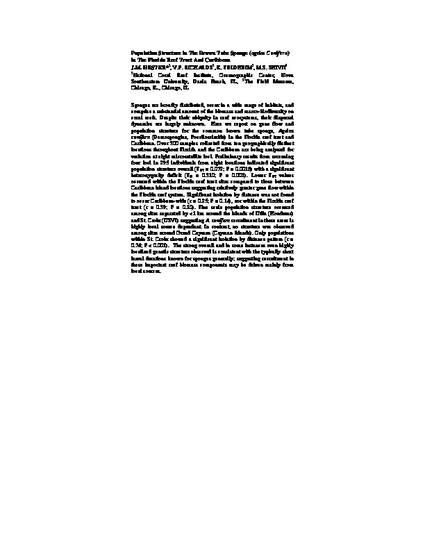
Sponges are broadly distributed, occur in a wide range of habitats, and comprise a substantial amount of the biomass and macro-biodiversity on coral reefs. Despite their ubiquity in reef ecosystems, their dispersal dynamics are largely unknown. Here we report on gene flow and population structure for the common brown tube sponge, Agelas conifera (Demospongiae, Poecilosclerida) in the Florida reef tract and Caribbean. Over 300 samples collected from ten geographically distinct locations throughout Florida and the Caribbean are being analyzed for variation at eight microsatellite loci. Preliminary results from screening four loci in 295 individuals from eight locations indicated significant population structure overall (FST = 0.072; P = 0.0018) with a significant heterozygosity deficit (FIS = 0.310; P = 0.001). Lower FST values occurred within the Florida reef tract sites compared to those between Caribbean island locations suggesting relatively greater gene flow within the Florida reef system. Significant isolation by distance was not found to occur Caribbean-wide (r = 0.25; P = 0.14), nor within the Florida reef tract (r = 0.39; P = 0.10). Fine scale population structure occurred among sites separated by <1 km around the islands of Utila (Honduras) and St. Croix (USVI) suggesting A. conifera recruitment in these areas is highly local source dependant. In contrast, no structure was observed among sites around Grand Cayman (Cayman Islands). Only populations within St. Croix showed a significant isolation by distance pattern (r = 0.74; P < 0.001). The strong overall and in some instances even highly localized genetic structure observed is consistent with the typically short larval durations known for sponges generally; suggesting recruitment in these important reef biomass components may be driven mainly from local sources.
Available at: http://works.bepress.com/mahmood-shivji/94/
